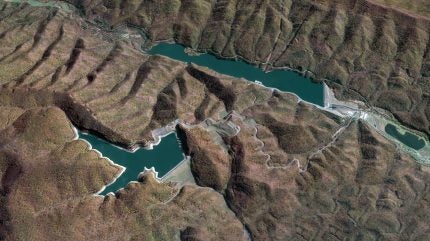
A new international assessment of long-duration energy storage (LDES) finds that pumped storage hydropower remains the most widely deployed and market-ready option across major economies, even as governments explore a growing mix of alternative storage technologies.
The study, conducted for Mission Innovation by Energy Systems Catapult, reviewed the technical feasibility and market conditions for 16 LDES technologies in 11 countries. While the report examined everything from hydrogen caverns to gravity systems, pumped storage stood out for its maturity, geographic suitability and access to revenue mechanisms.

Discover B2B Marketing That Performs
Combine business intelligence and editorial excellence to reach engaged professionals across 36 leading media platforms.
Conventional pumped hydro scored at the top of the deployment scale in nearly every country where suitable elevation and water resources exist. Australia, China, France, Germany, Italy, Spain, the UK and the US all received the highest marks for both physical conditions and functioning markets.
The reasons are clear: pumped storage is already operating at scale, integrates easily with existing power systems and can earn revenue from multiple markets such as arbitrage, ancillary services and capacity mechanisms. In countries with cap-and-floor schemes designed for LDES, such as Australia, Italy and soon the UK, pumped storage is particularly well positioned.
High-density pumped hydro and inverse pumped hydro were also assessed, although their deployment potential varies more widely depending on topography and access to deep water or underground space.
While several emerging technologies show early promise, most lack the combination of geography, commercial models and policy frameworks that currently favour pumped storage.

US Tariffs are shifting - will you react or anticipate?
Don’t let policy changes catch you off guard. Stay proactive with real-time data and expert analysis.
By GlobalDataGravity-based systems, compressed air storage in caverns and underground hydrogen storage appear in planning or demonstration phases in multiple countries. However, these technologies face mixed market conditions and often depend on future policy development, making them unlikely to compete with pumped hydro in the near term.
Technologies such as underwater compressed air, metal-air batteries and hydro-pneumatic storage scored consistently low in the assessment due to limited deployment experience and insufficient market signals.
Countries with clear targets for LDES or broader storage goals tend to create stronger investment conditions. Public funding also plays a significant role, especially for lower-readiness technologies. However, even with these supports, the report notes that current markets reward frequent cycling, which disadvantages technologies intended to store energy for long periods.
Pumped storage avoids much of this problem because it can participate in existing short and medium-duration markets while still delivering long-duration system value when needed.
Australia, Italy and the UK were identified as the most favourable environments for LDES due to targeted market mechanisms. China and Germany offer strong long-term potential, supported by funding and deployment activity, although without market structures tailored specifically to LDES. Across all of these countries, pumped storage is the dominant technology already operating at scale.
As electricity systems continue to add variable renewables, the report suggests that pumped hydro’s proven role in energy balancing and security of supply will keep it central to long-duration storage strategies, even as new technologies develop.





